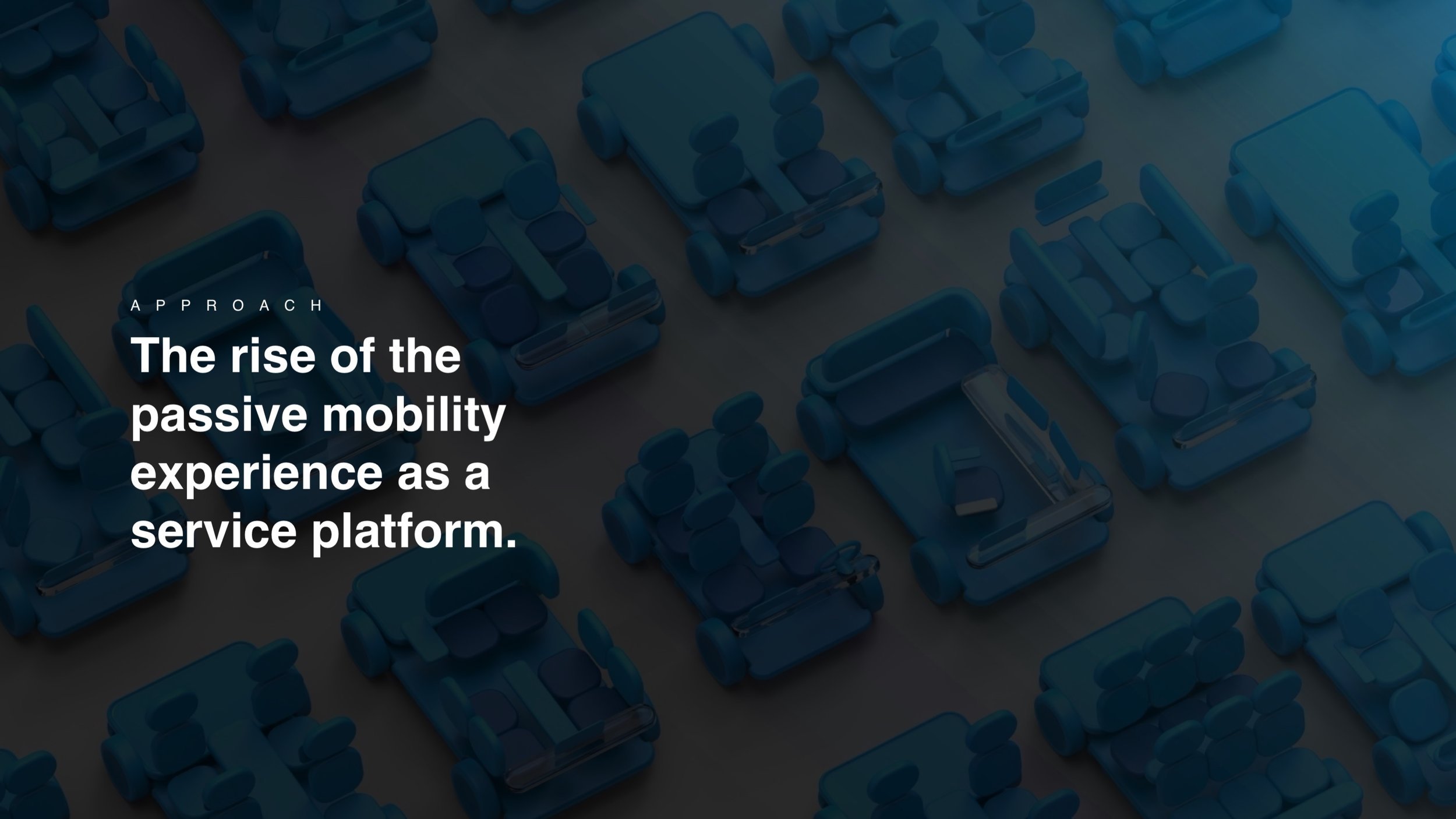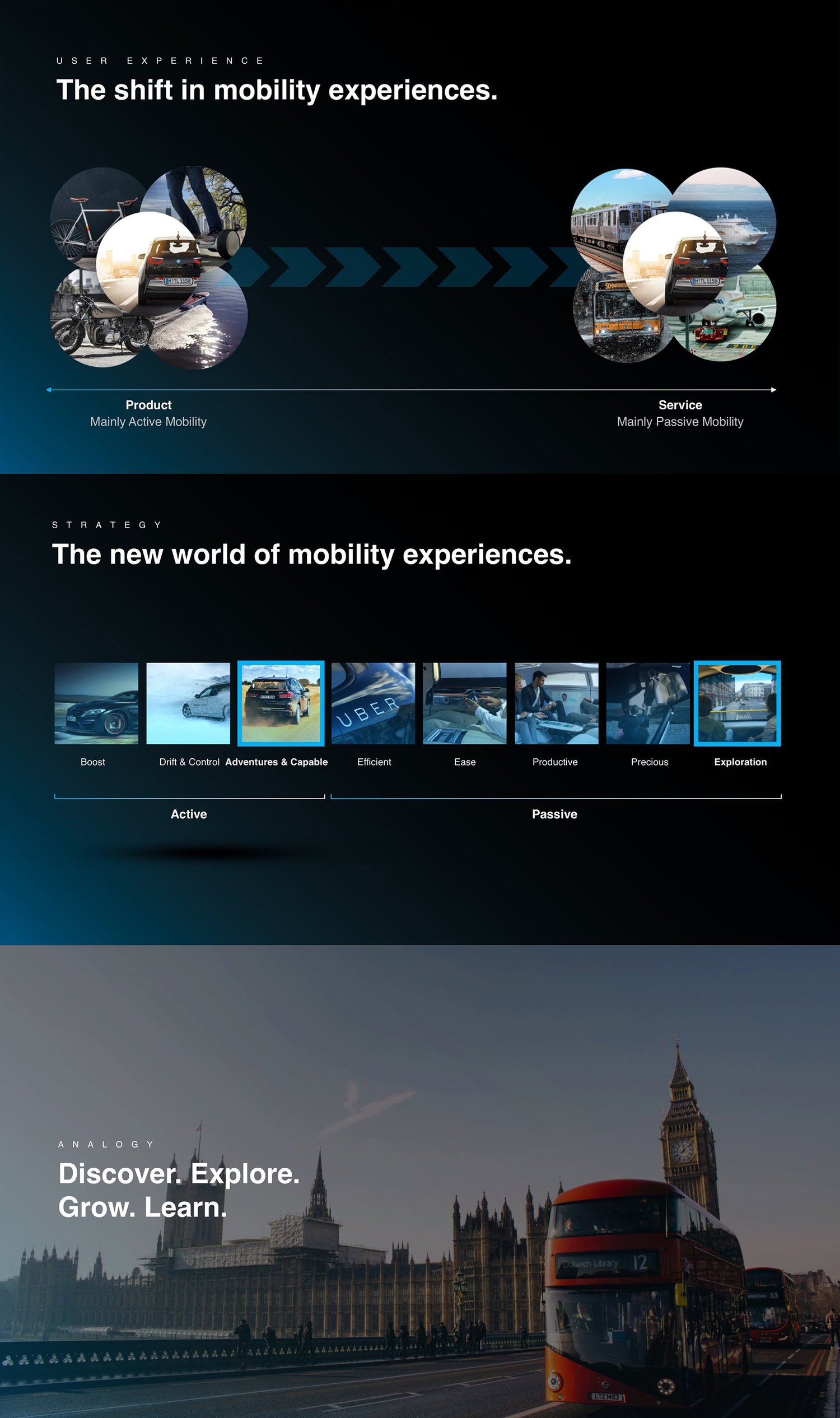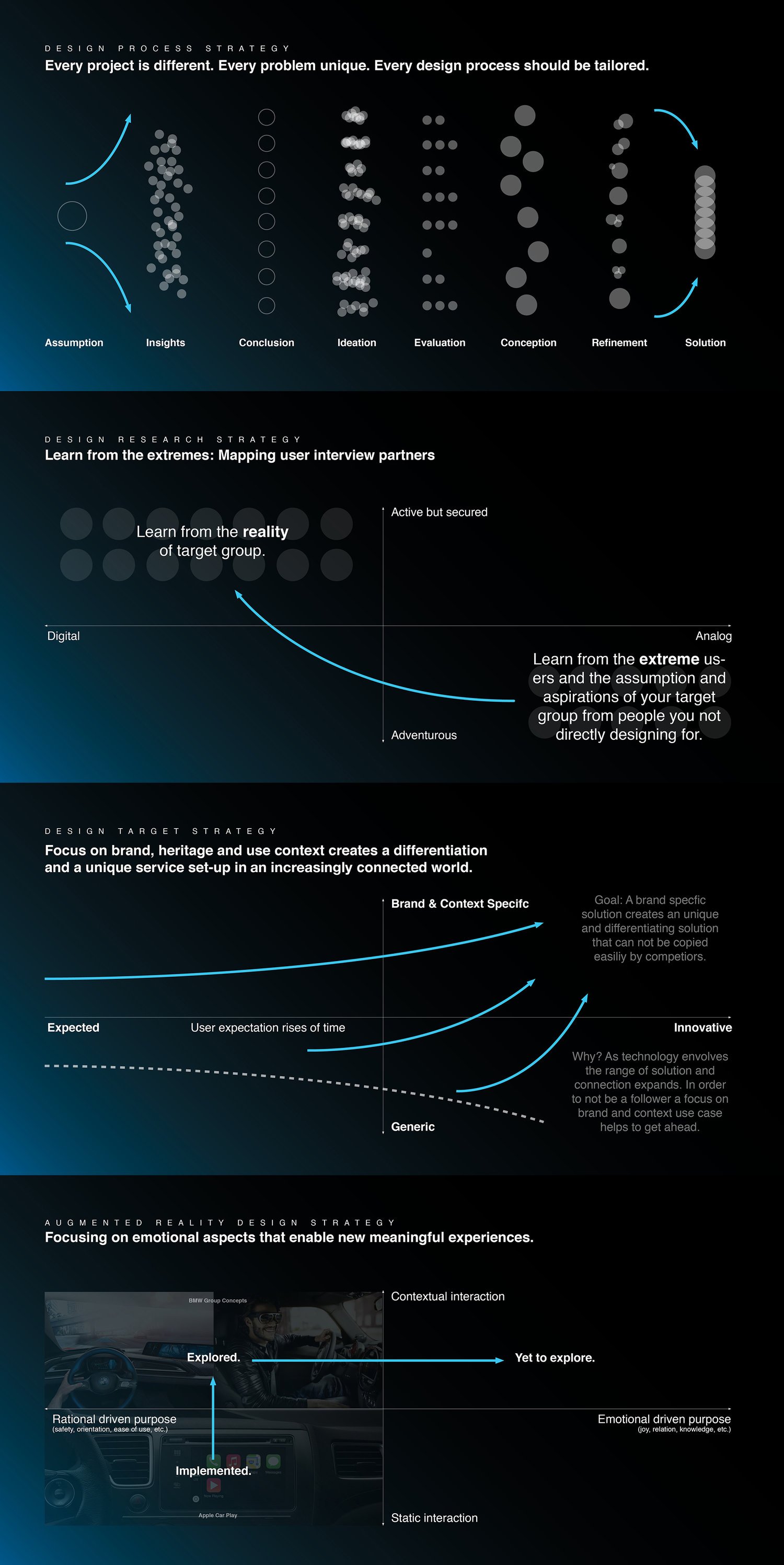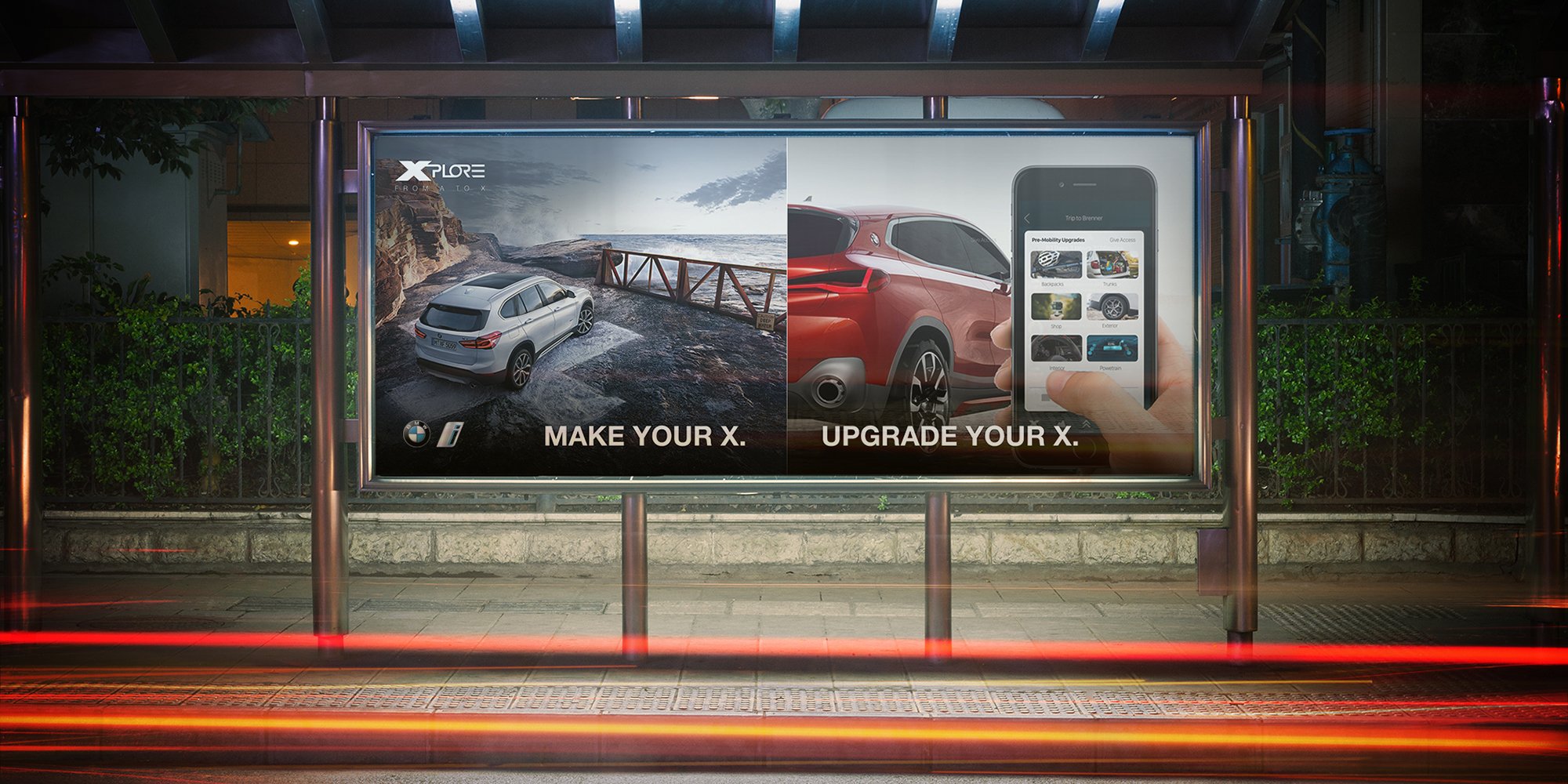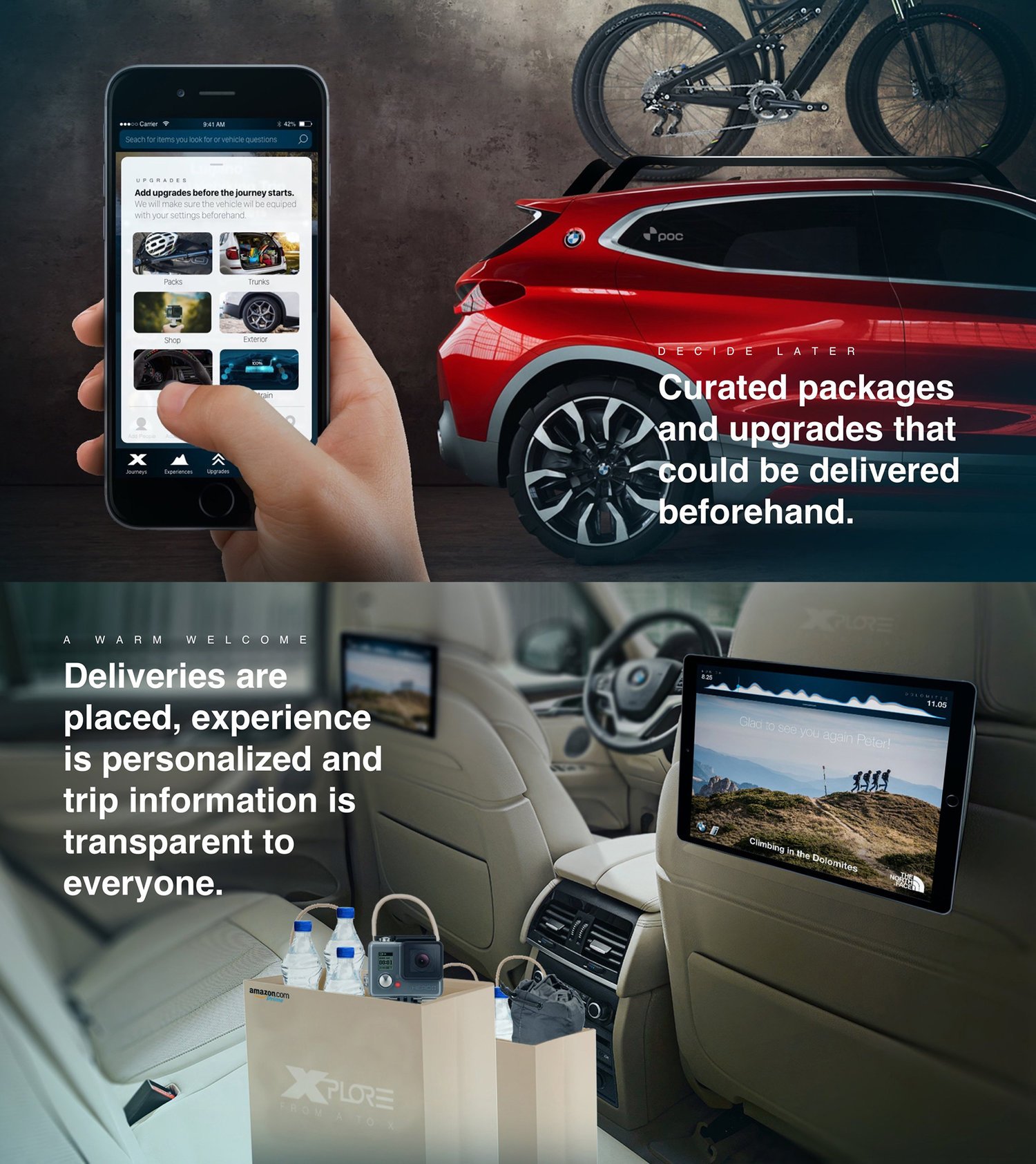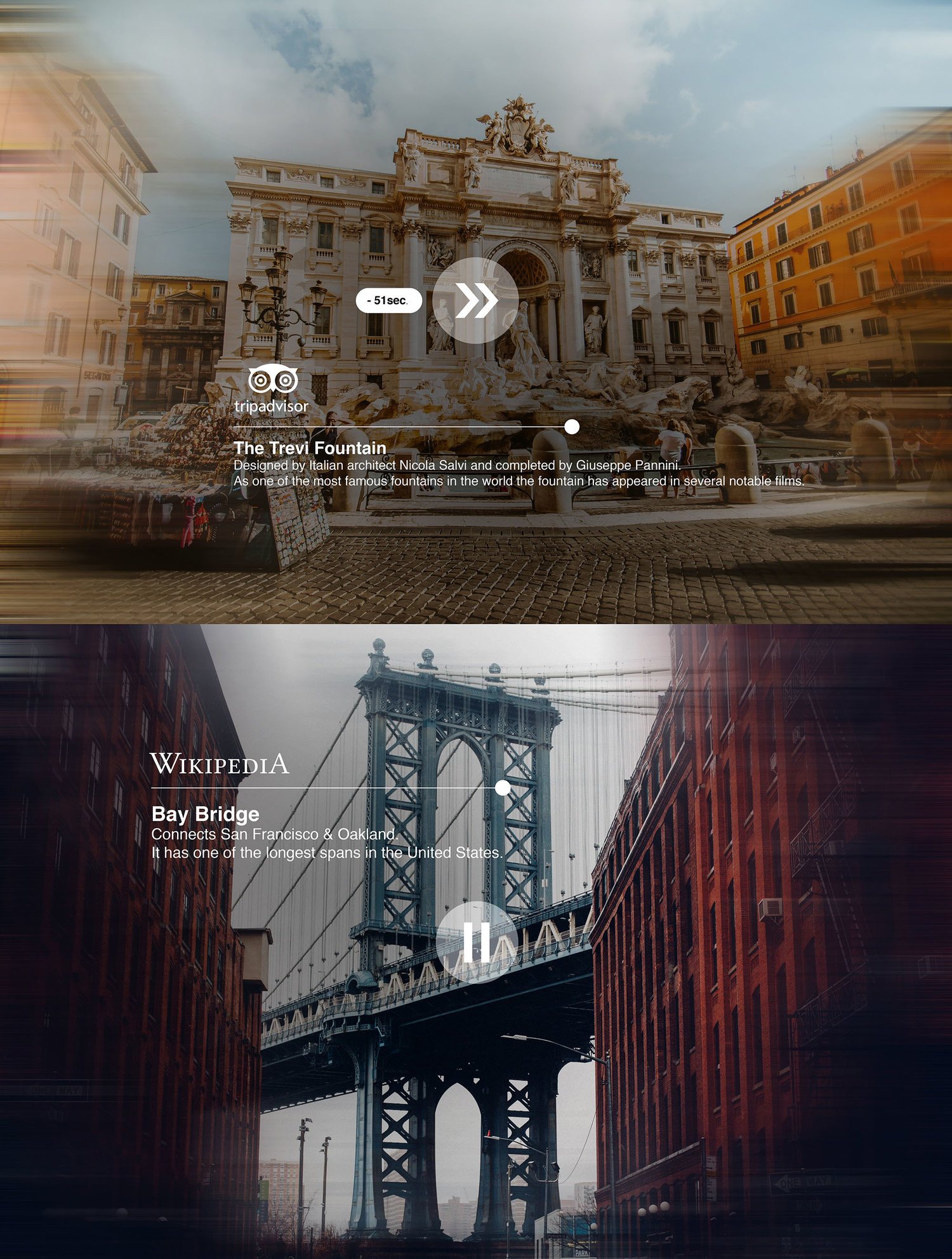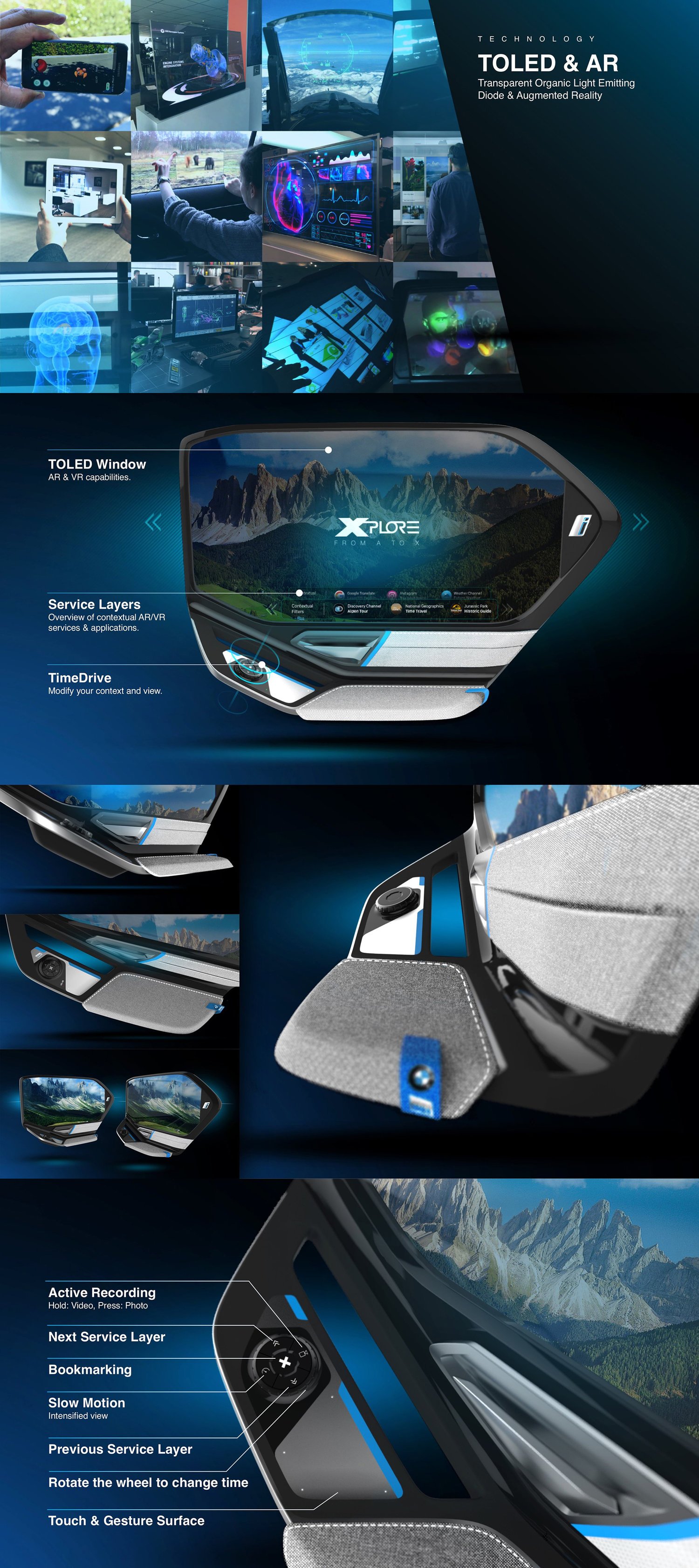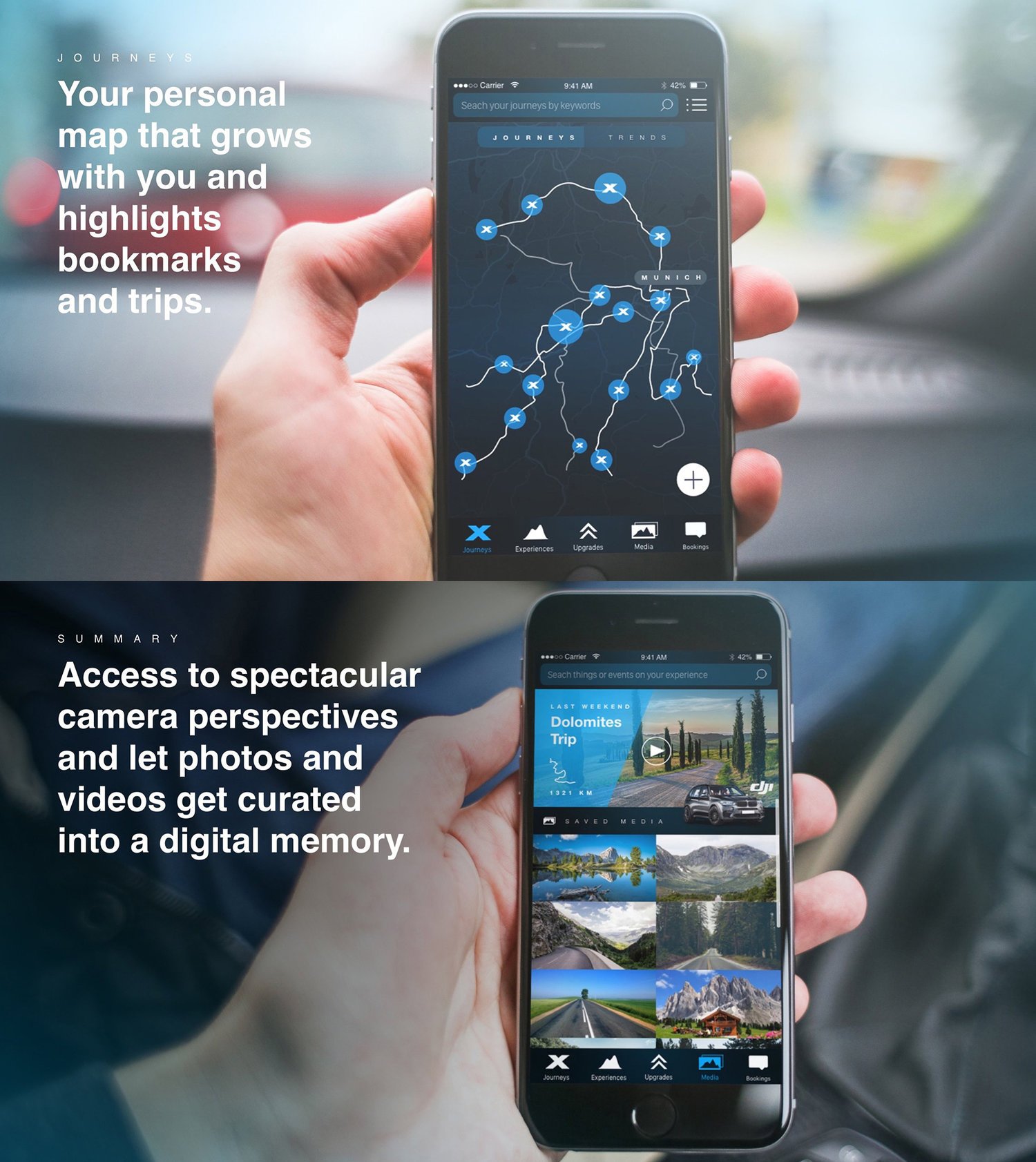BMW Xplore
Service Design, UX/UI Design, Industrial Design.
How could we empower passengers to experience the moment?
The diversification of mobility solutions.
Autonomous driving is changing mobility and it's design process. "Mobility as a service" describes solutions where the user is accessing the product value through a digital service rather just through owning the product itself. Despite that, it will be expanding the landscape of mobility solutions and diversify the opportunities for users through services that address specific user needs and scenarios. Being focused and having a clear and specific value-proposition for the targeted use-case(s) will become increasingly important. Furthermore, the passive experience (where the user doesn't have to drive) will become more important which opens up a room for new innovations.
A new space of opportunities.
With autonomous-driving, the vehicle interior becomes a platform for experiences. This will enable users to choose the right setup for the specific use cases: like a workspace-interior to be productive on the way to work or a sports room to participate in a yoga class on the way home.
Human-centered design in mobility.
People already experience autonomous transportation today. To learn about behaviour patterns and needs we can research on how people interact in these spaces that are already present today: buses, trains, plains, ships, etc. Services that are built based on these products are for example city tours like the London Bus Tours. An experience that is based on peoples curiosity to explore and discover the context they are moving trough. A statistic by IPSOS (2018) shows that “looking outside the window” will stay the top use-case even when cars drive themselves. BMW Xplore aims to take these insights and explore how autonomous "mobility as a service" can advance the experience of learning about the context in the future. Connecting people closer to the world around them.
Focus: Long-distance traveling and multiple people.
Very early on research and user interviews showed that people face many pain points when it comes long distance travelling. Therefore the project sets to define the most critical touchpoints of this experience and explores how to improve the user experience. The project process was intentionally open and the outcome not defined in the beginning. The goal was to be user-driven and the solution could range from digital to physical or service solutions - depending on which framework would be necessary to elevate the user experience.
What if mobility would adapt to the user needs on long distance travelling?
Strategizing, Immersing, Prototyping, Co-creating, Brainstorming, Evaluating, Revisiting, Conceptualising, Designing, Building, Breaking.
Process Movie: Design thinking and doing in the context itself. Prototyping in the vehicle and during the actual journey.
The conclusion of the research were 8 identified touchpoints that integrate the biggest pain-points for people and opportunities to elevate the mobility experience. Using the vehicle and journey itself as a room and situation to design and think about solutions helped to boost the user empathy and to understand insights I got from the user interviews. It furthermore increased the creativity by evaluating the prototypes directly and understand the situations the user is going through.
Watch the movie.
The base of the project were user insights and problems which later got catalyze towards a brand-specific solution. This system concentrates on empowering people in having new mobility experiences that are curated and prepared in advance - in order to reduce time consumption. Furthermore, BMW Xplore focuses on new seamless ways in personalizing the vehicle set-up as well as how this could support people in daily scenarios. In order to remember or experience contextual digital entertainment, the mobility service connects users to new empowering tools that unite both physical and digital design. This enables the user in having curated augmented reality experiences, travelling back in time or bookmarking things that were interesting on the way.
From A to X.
BMW Xplore helps people to have new experiences, make new discoveries and explore their surrounding. It’s a service designed from A to X - meaning it will help the user not just during the journey but also solves problems and pain-points before the journey that reduce stress and time consumption for planning while creating a more democratic experience for the host. It is also designed in a way to create long term value for the users, create memories and intelligent summaries.
Curated Experiences & Artificial Intelligence.
See what journeys and experiences are trending in your area. "Curated Experiences" allow you to book complete mobility package that includes everything you need for the journey: the destination activity tickets, equipment, the perfect route, preparing seat infotainment content and more. In a case of Level 4 or 5 autonomous driving, the vehicle could pick up all passengers completely prepared. The vehicle act as a platform for curated third-party experiences that can be designed around the aspect of being enabled by the vehicle.
Furthermore, Xplore imagines the vehicle as a proactive digital companion that helps with mobility specific intelligence that takes part in the group's conversation. It represents the vehicle and creates a bond between the passengers and the product. Besides remembering users of things to bring, (for example, if the weather is going to be bad) it also can help all trip members to arrange shared items. The digital companion also replies to questions, for example, "what is the trunk size and does my items actually fit in"?
Personalised trip and interior experiences through on-demand delivery.
Users can add "Upgrades" to their vehicle seat before the journey starts. These upgrades, which can be anything from renting a GoPro or mountain bike to a curated sports package, will be delivered to the selected vehicle for the journey by on-demand delivery. On the day of the journey, the deliveries are placed on the seat. This empowers all passengers to be responsible for themselves and reduces stops at the beginning of a journey to pick things up. Furthermore, it democratizes the experience by giving everyone, not just the host and driver, access to the vehicle intelligence and interior space from remote through digital services. If certain things can’t be delivered they will be automatically added as a stop at the beginning of the journey and the rental shop will be notified about arrival and requested items. One of the interview insights that was driving the design process of this touchpoint was that the host often has the most pressure and time consumption to planning and organizing which leads to a desire of a more shared feeling of responsibility between all passengers. Taking the network of BMW dealers into consideration the vehicle can be also upgraded beforehand to adopt larger experiences (roof rack, exterior bumpers, tyre chain etc) and changes to the vehicle.
Contextual Entertainment.
Curated content that connects you to the destination and digital offerings that make most out of your time in the vehicle. Even when losing time in the traffic jam the system will make sure you gain time at the destination through preparation or learning content in the vehicle that helps you to plan your time at the destination or learn about the upcoming activities. The service aims to improve the user's joy and use of time at the destination by giving the uses access to these tools before the arrival as entertainment in the vehicle. Furthermore, the system shows highlights that will appear (wave line on the top) without revealing ahead what highlights exactly to the create excitement. Ultimately the system is designed to trigger more social interaction and collaboration between the passengers.
The BMW Window of the Future: Travelling in Time.
One of the biggest insights of the user research was that users wish they had more time to experience interesting views. Due to the speed of the vehicle people often just have seconds to see something or if another passenger discovers something outside people don’t have time to react to see it as well. Therefore the “Window of the Future” enables people to go back in time and see things they discovered again.
This works by using the cameras outside that enables autonomous driving and saving the recorded view for a few minutes. By having the TOLED (Transparent-OLED) supported side window and using the autonomous driving camera content the user can go back in time. As soon as the user is interacting with the “TimeDrive” controller the window turns from transparent to virtual (via the Transparent-OLED). This enables the users to stop the moment (switch from transparent to virtual) and by rotating the controller back to go back in time through the digital content. The user can stop then at the view which they want to see again and experience the discovery again. This again triggers social interaction between passengers by being able to share it with other passengers. The user has also the chance to see how the future looks like by using content from cars in front of them.
See the prototypes in action.
The project contains of three prototypes that bridge the digital, service and physical experience: an interactive AR/VR side window, mobile application and in-car infotainment system.
Prototype Video: From digital design requirements to physical design requirements.
To make the interaction with the context quick, responsive and easily accessible it consists of a tactile user interface (TUI) that is intuitive to use. This enables people to go back in time or into the future without having to look at the interaction itself - the user can focus on the outside during the interaction. The TUI (tactile user interface) also enables the user to take photos, videos without pulling out their smartphone. Another feature is “Slowmotion” which enables the user to experience a view in slow-motion.
Another user insights during the research were that people often forget what they discover. This can happen on long-distance travelling but also on short distances. Therefore the window’s main button (X) is the bookmark functionality. It enables people to bookmark whatever they find interesting. When using the bookmark button the GPS location and a snapshot of the outside will be placed on the BMW Xplore map in the mobile application.
Touch + Gesture
To make people experience this in a static environment the prototype contained a 4K screen that is showing a video of the side-window view and an interactive armrest that recognised gesture motion through a 3D magnetic room as well as working dials and buttons that let you interact with your travel context. Prototyped with the combination of Unity, Arduino and a 3D gesture pad.
See the video of the prototypes and explore the interactions, experiences, and applications.
An Augmented Reality platform.
The BMW Window of the Future is also acting as an AR (Augmented Reality) platform. Depending on the environment and context it enables third-party providers to facilitate contextual storytelling. For kids, these experience could include the aspect of gamification.
The research showed the interest of users in the context but that they lack contextual information. The Window concept helps to reveal the richness of our environment and ultimately connects people closer to their surrounding environment.
Another insight of the user testing was how little contextual information turned a normal view into an exciting story. Just by revealing slight information the user can identify and is excited about the context.
An enabler to new virtual worlds.
Not aiming to replace reality but to make it more meaningful to you: for example learning destination languages by image recognition or learn about the dinosaurs that use to live in the area.
Bridging physical and digital.
A central role of the Window is to document the journey and make people focus more on the context or actual experience - and less about digital documentation or creation. At the same time enabling people to do exactly that if they want without losing focus while pulling out the phone. These memories that are achieved with the window are synchronised with the mobile companion which automatically creates a storybook that exchanges the created content between all group members.
World Design Event (WDE) Conference keynote.
The project was presented at the kick-off event "World Design Event" of the Dutch Design Week where I presented along with other conference speakers in the Day program "Antenna - The worlds best design graduates".


